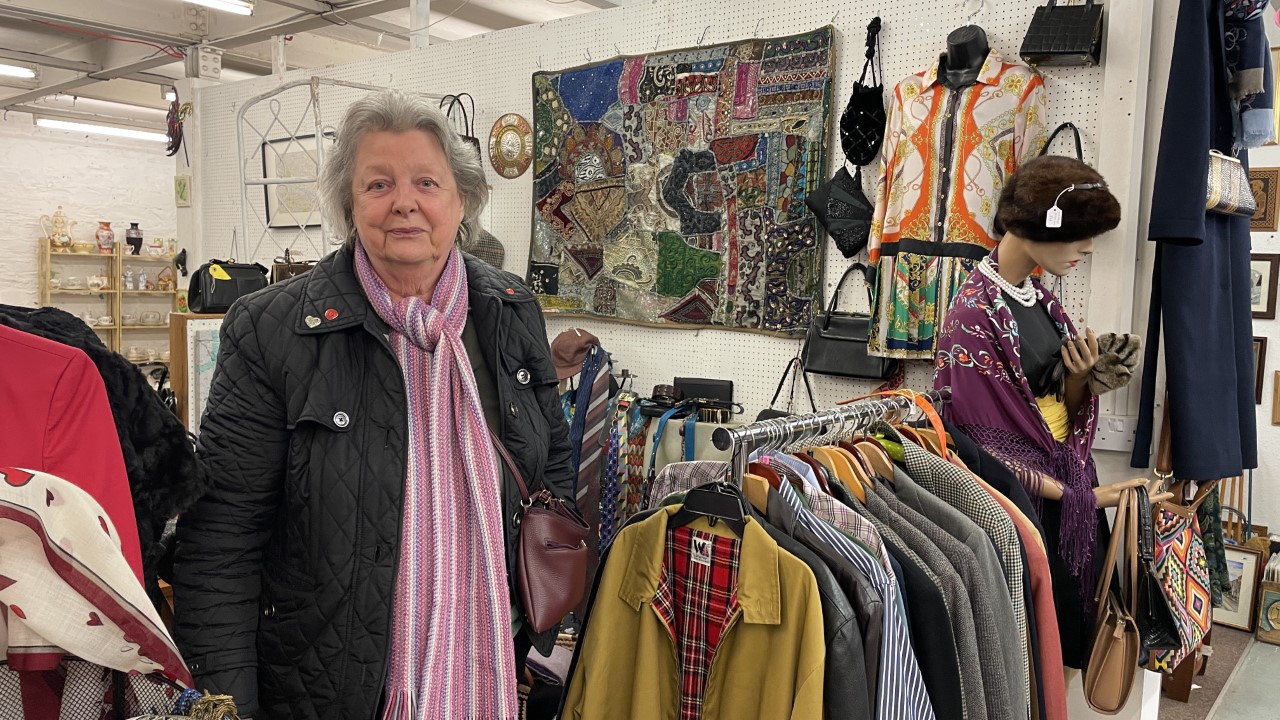Shoppers are de-cluttering and buying useful items rather than traditional antiques these days – so traders are having to adapt
ALONGSIDE Cardiff’s high rise Central Square and modern shopping malls are small pockets of the past: the city’s antique, vintage and collectible shops.
These little units hold relics of a bygone era, but many antique and vintage dealers have seen the industry change and they are uncertain on where it is going.
I visited Geoff Lewis’ shop, Vintage Past & Pleasant, where antiques and collectible pieces lined every shelf and speakers played vintage music dating back many decades.
Mr Lewis’ store sits in the heart of the Grade II listed building The Pumping Station, on Penarth Road, which houses independent sellers.
He has been at the former Victorian pumping station, about a mile from the city centre, for around 12 to 13 years.
His late wife first drew him to the industry 20 to 30 years ago when she started to sell brooches she had collected.
Mr Lewis now trades in collectibles, items from the 1920s and 1930s, and likes Art Nouveau and Art Deco pieces.
When I asked if he calls himself an antique dealer, he said “antiques are a bit of a thing of the past at the minute”.
Mr Lewis believes the antique industry is struggling.
“I think it’s dying on its feet to be honest with you,” he told me.
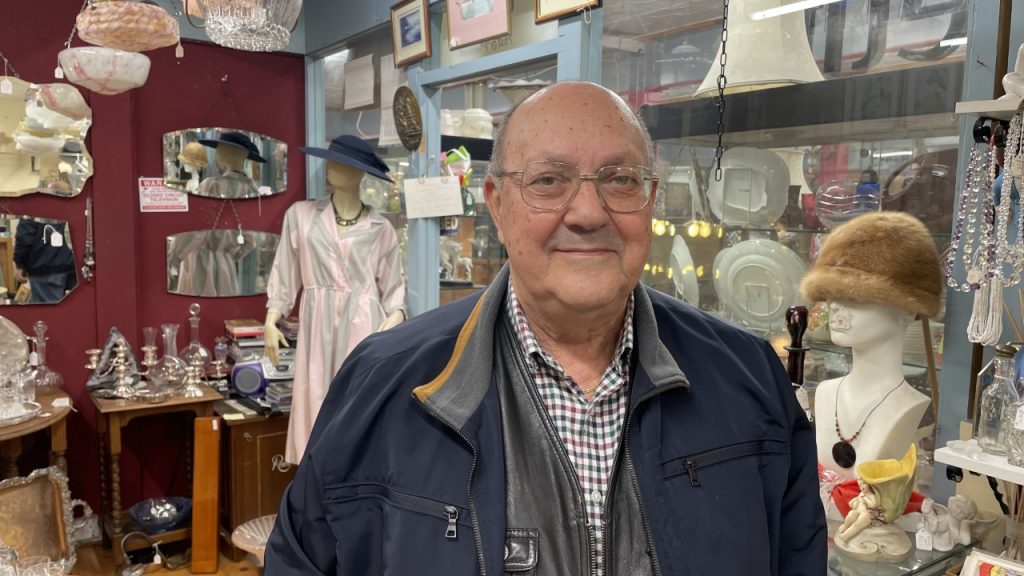
“People are not willing to part with their money at the minute without a good reason.”
The “once-formidable” antiques industry had decreased in value by 45% from 2004-2019 with some items selling for 70% less than they used to, according to Artnet.
What has caused the industry fallen to such a depth?
Deloitte has placed the fall in the market to five key things: aesthetics, supply, competition, technology and house prices.
But one aspect of the industry that has changed is the collectors, according to Mr Lewis.
“There’s very few collectors around anymore. You get the coin collectors, yes, but people used to collect things like the Royal Doulton Ladies,” he said.
According to the trader, collectors have “either died out or become old or they’re decluttering”.
The way shoppers look for pieces has also changed over years as many do not look out for specific artists or designers.
He tells me: “It’s difficult knowing what people are looking for because a lot of people now — most people, I would say — don’t look at who made the item whereas before something with Clarice Cliff’s name on it was worth a fortune.”

“You get good days, you get bad days, but people don’t really need to come here.”
Geoff Lewis
For the 77-year-old, the cost-of-living crisis gripping the UK will only place more strain on the already changing industry.
“If you’d been here this weekend you’d see that there’s hardly anybody in here,” Mr Lewis said.
“You get good days, you get bad days but people don’t really need to come here. They come out, some of them just wandering round — just looking and that’s it. It’s like a museum at times.”
The cost-of-living crisis affecting city centre shops is also affecting antique stores, as Mr Lewis said, “we’re no different to any other retailer, really.”

The industry’s future is unclear for Mr Lewis, but he has seen industry predictions not pan out.
In 2021, Deloitte cited a mismatch in aesthetics as a reason for the decline in the market.
It said: “Brown furniture, no matter how well built, or interesting its back story, is harder to fit in.”
Until 2017, an annual audit took place through the Antique Furniture Index, which analysed the value and prices of furniture for 48 years.
In its final 2016 issue, it revealed that the index was “down to a level last seen in the 1980s”, according to the Antiques Trade Gazette.
But Mr Lewis’ lived experience of dealing furniture says the opposite of this bleak account.
Furniture hunters in the Welsh capital are still actively seeking out items from a by-gone era, even if interior design habits have moved on.
“They said for a long time that the brown furniture side of it had gone but you see a lot of people still buying brown furniture,” he said.
“A lot of people come in here, they put their nose in, they see there’s no furniture and they go wandering off somewhere else because, a lot of them, that’s what they’re looking for.”
One thing is clear for Mr Lewis: the cost-of-living crisis is not ending anytime soon. People are staying away from decorative pieces and looking for more useful items.
It is these useful items that Caroline Richards focuses on as shoppers tighten their purses.
The 78-year-old has been based in Jacobs Antique Centre for four years, which is hidden around the corner from Cardiff Central station and spans three floors.
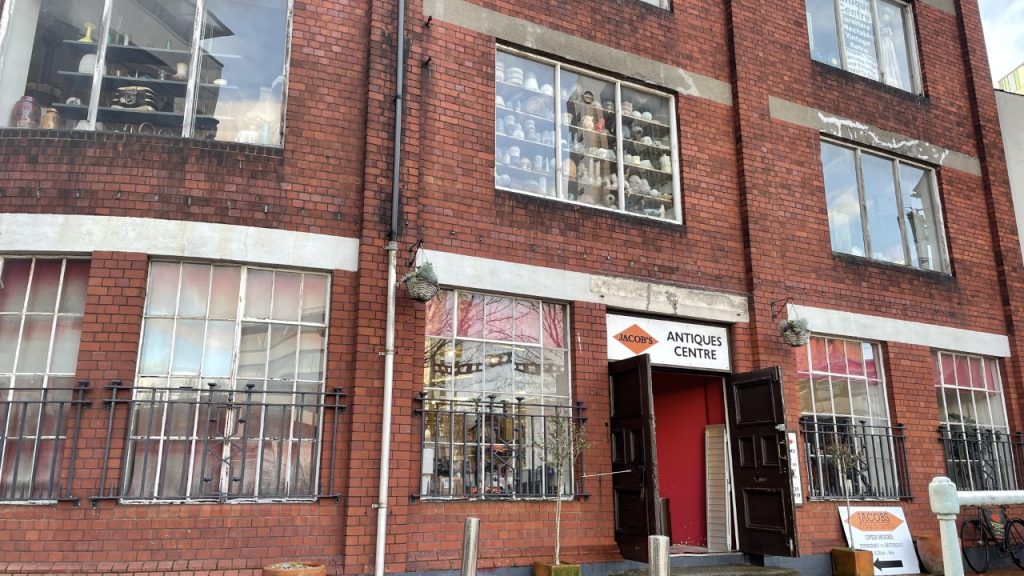
“Things have moved on quite a lot, you know. People don’t want the old stuff so much.”
Caroline Richards
Ms Richards describes herself as a dealer “in all kinds of things” due to the changed market.
She tells me: “I don’t really call myself an antique dealer because it’s very little antiques now. It’s more mid-century and collectibles, very little antiques.
“Things have moved on quite a lot you know. People don’t want the old stuff so much. They want more mid-century, more useful things.”
The cost-of-living crisis is furthering this shift, according to Ms Richards.
“We do useful stuff. We do glasses and cutlery, stuff like that, which is useful rather than a vase, which people could really do without,” she said.
Due to the cost-of-living crisis, 57% of people are cutting back on non-essentials, according to the ONS.
With even the richest 10% of households facing a 9.6% inflation rate, people cannot afford to splash out on non-essential items anymore. But they are opting to spend on “useful” antique items instead.
It is some of these “useful” items, such as mid-century glassware, that are her favourite items.

Vintage clothes are other “useful” items that she sells.
She said: “We do vintage clothing which is quite good value because you get some designer stuff as well, so that’s quite good.
“And it’s good for the environment as well, you know, because you’re recycling it.
“We get a lot of students come in because they look at the clothing. They like the bags.
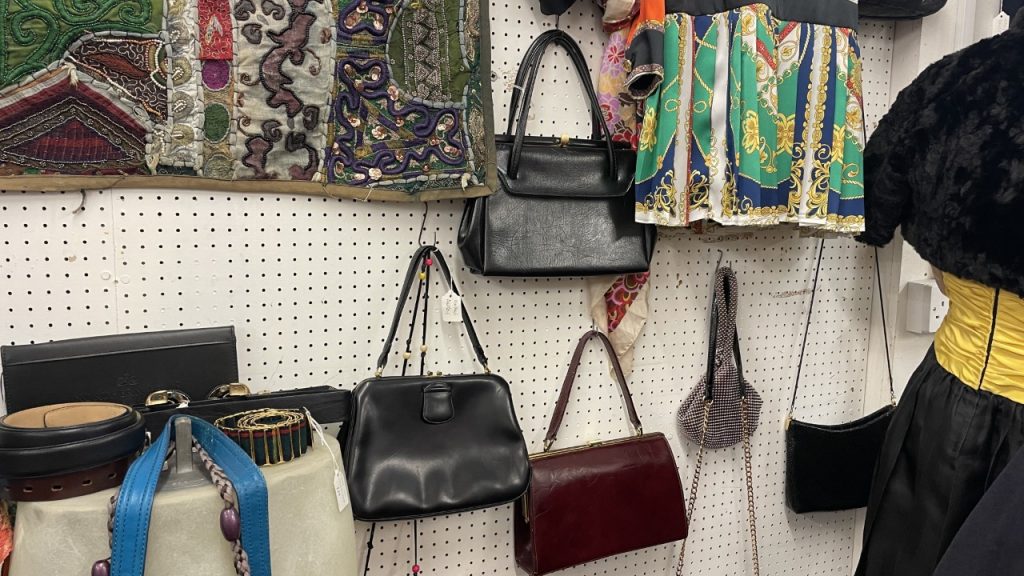

However, Ms Richards does not think all hope is lost for the older antique pieces.
“Good quality antiques will always sell. Really rare pieces and really good quality antiques, people will always probably want those.”
The demand for these upper-end, rare pieces is still stable and is not seeing the dramatic decline in price and interest like the rest of the market, according to Artnet.
It said: “Though the overall antiques sector has shrunken down, the very top of the market remains highly active. Unique and very high-end pieces have proved to hold their value.”
Despite changes to the market, the unexpected nature of the job is as much of a draw as ever for Ms Richards.
“I love the buying more than the selling,” she said through a laugh. “I really love it.”
She also thinks it is so important to maintain stores like this in Cardiff.
“I think it’s nice. A lot of people don’t even know it’s here,” she said. “A lot of people come in and say, ‘oh it’s lovely, there’s so much to see’.”
Cardiff Antique Centre is another antique hub with plenty to see and it can be found in Royal Arcade.
The centre is home to three sellers who all run their own businesses, including Janet Butler who has been working in antiques since the 1980s.
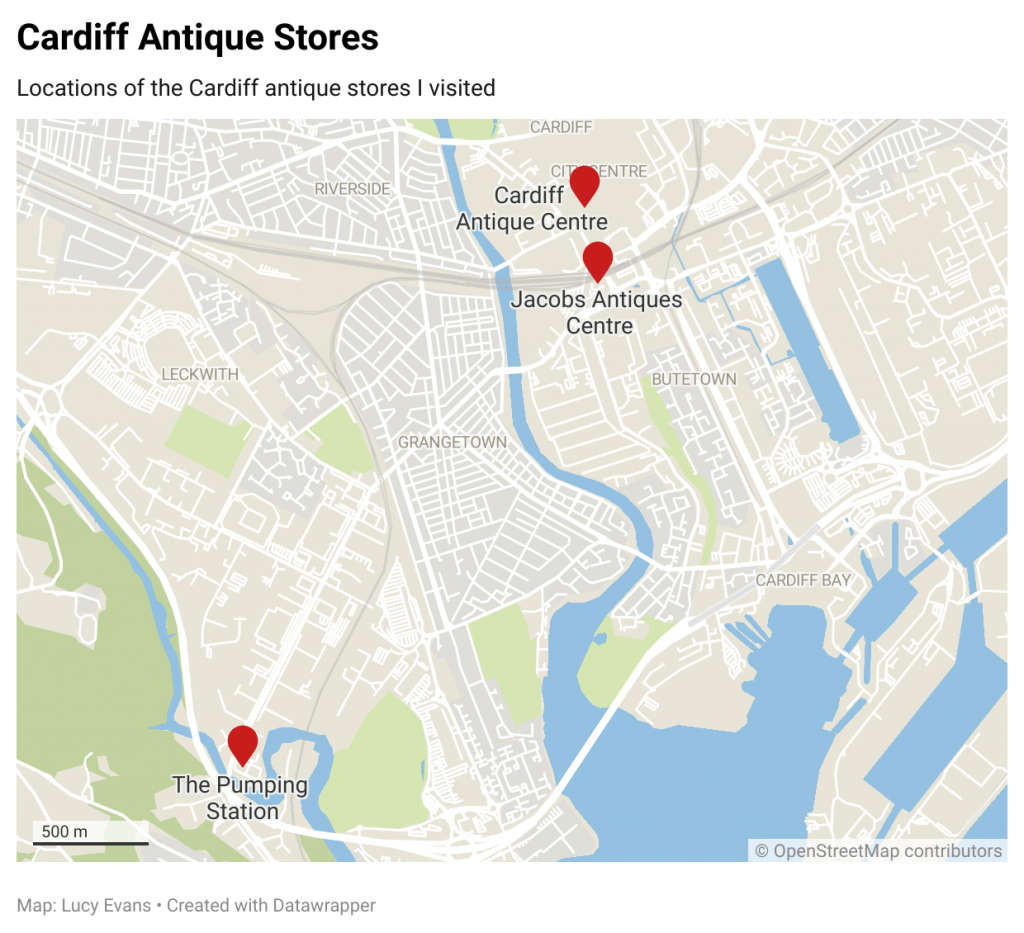
According to Ms Butler, one particular change means that today’s traders do not have to do as much research as she did when starting out.

She said: “When we first started there were no price guides. Everybody can be an instant antique dealer so the years that you put in doing your own research and learning through buying and selling was no longer like that at all. People looked things up in the books.
There are many price guides available for traders and buyers to use to accurately price their antiques.
They were introduced in 1972, revolutionising the market but pricing out seasoned traders as anyone could become an “instant expert”, according to the Journal of Antiques and Collectibles.
“You had to buy books and research yourself for things but it’s not like that now, it’s all gone to pot,” Ms Butler said.
Ms Butler has seen that the “customer base has dwindled” but believes there is still a market for antiques.
She said: “There is still a market because there are people out there that are looking for something exclusive that you can’t just go and buy in any shop.”
Like Caroline Richards, Ms Butler believes that upmarket antiques will continue to sell well.
“I think the future will be in the dearer items so shops in London, say, that are selling diamond rings for 50 grand or oil paintings for half a million.
“There will always be people with plenty of money that want exquisite things but for the middle tier, I don’t know that there will be that much of a market.”
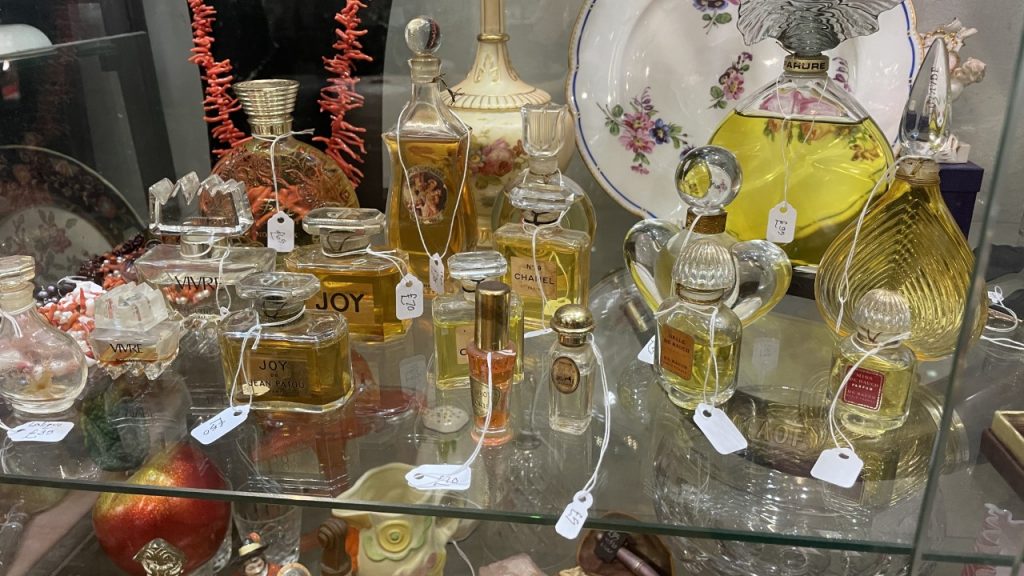
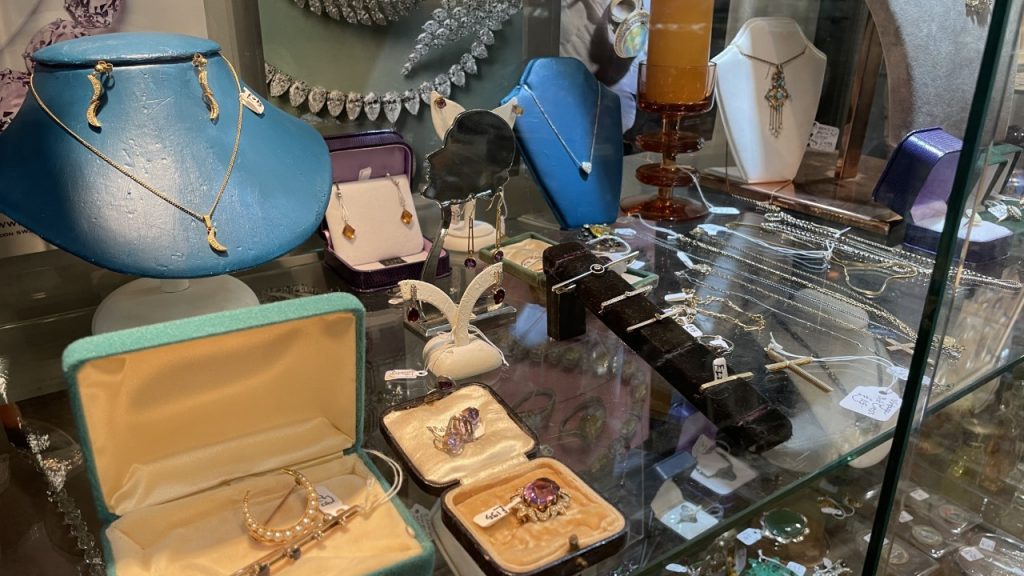
When I asked Ms Butler about the importance of keeping the Cardiff antique scene alive, she said: “It’s not really down to me. It’s down to the customers. But it is important. People love to come in here.”
Despite a changing market, the future of these shops of the past clearly matters to those in Cardiff’s antique and vintage community.

